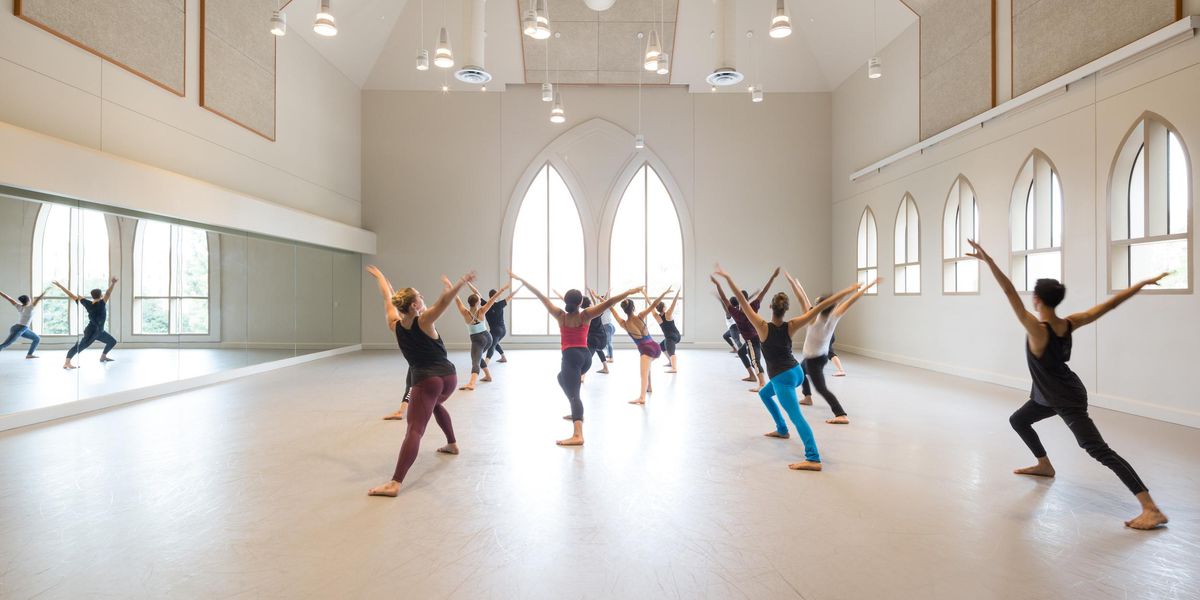Stepping Into the Role
The School of Pennsylvania Ballet’s Company Experience gives aspiring professionals a taste of the ballet life.
Arantxa Ochoa coaches students with the intensity of a ballet mistress. Photo by Alexander Iziliaev, courtesy PAB
A group of young women in colorful ballet skirts waits quietly for Arantxa Ochoa to start. The director of The School of Pennsylvania Ballet plunges in: “Juliet has a new dress on, and while she is dancing with Paris, she sees Romeo. When you look at him, all of a sudden you want to dance.” Ochoa moves from passé to a fourth position. Her eyebrows are raised gleefully as she continues to narrate both the story and the choreography. “The technique is nothing in this variation. It is all the feeling towards Romeo. Don’t think of it as a step; think always of what it means.”
The room full of advanced students is learning a slice of John Cranko’s
Romeo and Juliet from the former Pennsylvania Ballet principal. It is no accident that Ochoa has chosen this variation, with its focus on dramatic discovery, for The School of Pennsylvania Ballet’s Company Experience. After five weeks of the school’s more traditional summer program, this additional week is an option for select students, ages 16 to 22, to sample company life while honing the stage presence it takes to excel in a professional career.
Finding the Accents
“What is missing in most training is soul,” says Angel Corella, artistic director of PAB. “This week is about going beyond clean and correct to help them develop their artistry.” While the day begins with a technique class, given by either Ochoa, Corella or Pennsylvania Ballet II director and principal dancer Francis Veyette, the real goal is to simulate a corps dancer’s rehearsal day, learning new ballets and styles as quickly as possible. This particular day offers a mix of repertoire from
Romeo and Juliet to Diana and Actaeon to Etudes to the contemporary work of resident choreographer Matthew Neenan.
Angel Corella’s class focuses on energy and clarity. Photo by Alexander Iziliaev, courtesy PAB.
While Corella’s class brims with technical tutorials—like keeping hips square during passé—the main focus is on energy and clarity. “I want to see the color of your personality,” he says during a waltz across the floor. “Choose a color and express it.” During a menage of
sauts de chat, he calls on real-world inspiration: “There has to be an accent at the top, a high note, an Osipova explosion.” The combinations are deceptively simple and the students who strive to achieve what Corella wants may be rewarded by being asked to demonstrate. As the week goes on, some students may be chosen by Corella for a slot in the main or second companies, or receive an invitation from Ochoa to stay on year-round with the school.
Now going into its fourth year, the Company Experience takes about 50 students, who are divided into two levels. The students range from the pre-professional to the newly professional. Some, like 17-year-old Sophia Nelson, have already been chosen for Pennsylvania Ballet II. “I’m not obligated to do the intensive,” she says, “but I chose to in preparation for the season.”
A Working Day
Students get a crash course in corps life. “New company dancers are often surprised by the speed at which they are required to learn a new ballet,” explains Corella, “and directors are looking for dancers who can pick up steps quickly.” Many students, like Nelson, are drawn to the variations practice that the Company Experience offers. “There is a lot of stamina-building with all of the rehearsals,” says Nelson. “We learn how to be in the corps de ballet as well as how to be a featured dancer. It is good to feel what it will be like.”
In Corella’s
Diana and Actaeon rehearsal, he begins, like Ochoa, with the story of the ballet. The group is divided into hunters and nymphs, splitting the studio evenly so that one group can review the steps while the other learns the next phrase. Using this kind of compressed process, typical of a company rehearsal, Corella makes it through the choreography of both variations in 25 minutes. “Guys first, girls judge,” he jokes as the first group of men prepares to run through the solo. Laughter relaxes the room even though Veyette is sitting in the front, taking notes. Corella maintains a playful and casual mood as the men stumble through their first attempts and the women nervously mark choreography on the side. “You have to give the impression of a beautiful summer day in the forest, not city sewage,” Corella coaches with a wink. The groups switch back and forth, and by the end of the hour, some students begin to show the personality that Corella has been asking for since class.
In the Juliet rehearsal with Ochoa that follows, Sophia Nelson works to get a better handle on her character interpretation. “No, Sophia, I saw a step but didn’t feel anything on that bourrée,” Ochoa calls out. “I want to see the difference between the ballerina and the student.” As the Juliets struggle to find a more natural coordination during tricky transition steps, Ochoa coaches each one with the intensity of a ballet mistress preparing a principal dancer. Finally she says with satisfaction, “There is no more Sophia, just Juliet now.”




